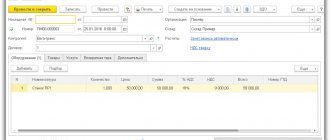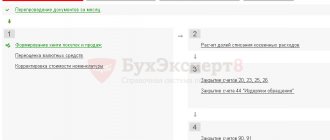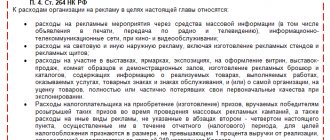New definition of current income tax
Current income tax is the amount that is actually payable to the budget.
It is determined based on the income tax base. The income tax base is determined as the difference between income and expenses. Until 2021, the current income tax was calculated from profit according to accounting data, adjusted by the amount of PNA (PNA) and the amount of change in IT (ONA). In 2021, the current income tax is the amount of tax calculated in accordance with the Tax Code.
Now only the norms of the Tax Code of the Russian Federation are taken as a basis. To calculate income tax, the tax base is multiplied by the tax rate.
The basic tax rate is 20%: 3% to the federal budget, 17% to the regional budget.
The main thing is to correctly determine the tax base.
Let us remind you that income tax income is determined on the basis of Articles 249, 250, 251 of the Tax Code of the Russian Federation, expenses - 253, 265, 270 of the Tax Code of the Russian Federation.
They contain lists of income and expenses from sales, non-operating income and expenses that are included in the tax base. It also lists costs and revenues that are not taken into account when calculating the tax base.
Read in the berator “Practical Encyclopedia of an Accountant”
Income not subject to income tax
What expenses are not taken into account?
Briefly
- The general formula for the current income tax is the product of the tax base and the tax rate - 20% for two types of budgets (federal and regional).
- The tax base is determined by the difference between the organization’s income and expenses included in the calculation. It is allowed to determine the amount of tax based on tax or accounting data, as you choose.
- In the first case, the tax base is determined based on the articles of the Tax Code of the Russian Federation, and then multiplied by the rate.
- In the second case, the conditional expense (or income) is calculated by multiplying the accounting profit by the rate. Then the estimated difference between constant tax revenues and expenses is determined, and changes in IT and IT are taken into account. A 20% rate is also applied to these amounts and the conditional expense (income) is adjusted to the values obtained.
- Correct maintenance of accounting and NU should give the same result when calculating the current income tax in both cases.
Two options for determining the current income tax
PBU 18/02 provides two options by which you can determine the amount of the current tax:
- method of deferment - according to accounting data;
- balance sheet method - according to the data reflected in the tax return.
In any case, the amount of current income tax reflected in accounting must be equal to the amount entered in the tax return on line 180.
The rules by which tax is calculated are contained in PBU 18/02. Changes to this document were made by the Ministry of Finance by order No. 236n dated November 20, 2018. Income tax is reflected in the financial statements, in the income statement. Its form was also changed by order of the Ministry of Finance dated April 19, 2021 No. 61n.
Income (expenses) from ordinary activities
Line 2110 Revenue
- Kt turnover 90.01 minus Dt turnover 90.03 VAT minus Dt turnover 90.04 excise taxes .
Line 2120 Cost of sales
Line 2100 Gross profit (loss)
- line 2110 “Revenue” minus line 2120 “Cost of sales” .
Line 2210 Commercial expenses
Line 2220 Administrative expenses
Line 2200 Profit (loss) from sales
- Row sum:
- page 2100 “Gross profit”;
- page 2210 "Business expenses";
- page 2220 "Administrative expenses".
Current income tax by deferment method
The current income tax, determined by the deferral method (that is, in the old way), is formed on a separate sub-account to account 68. Its amount will consist of a conditional expense or income, a permanent tax expense or income (PNR and PND), as well as a deferred tax asset and deferred tax liability (ONA and ONO). In this case, we reflect all the indicators in the same way as we did before. Deferred taxes and liabilities should be reflected in account 09 or 77 in correspondence with account 68. Conditional expenses, PNR and PND - in accounts 68 and 99.
We will not give a cumbersome formula. Everything is clear from the contents of the accounting entries:
- Debit 99 Credit 68
- a contingent income tax expense is reflected;
- fixed tax expense is reflected;
- constant tax income is reflected;
- a deferred tax asset is reflected;
- deferred tax liability is reflected.
Calculation of line 2410 “Statement of financial results”
The choice of method for forming the amount of consumer goods is recorded in the company’s accounting policy. In any case, the indicator in this line must coincide with the amount of NNP. The presence of PNO/PNA and ONO/ONA is reflected in the amount of consumer goods by the necessary corrections. To do this, in line 2421 of the report, information about PNO and PNA is indicated as reference information.
In accounting, PNO is indicated on the debit of the account. 99/PNO-PNA from credit account. 68/NNP, accordingly PNA is reflected on the credit account. 99/PNO-PNA.
Page 2421 = D/rev 99/PNO – K/rev 99/PNA
Exceeding the credit amount indicates the presence of PNA; it is written on page 2421 without brackets.
Transformations of IT are recorded on page 2430. This is the difference between the turnover on credit and debit of the account. 77, corresponding to the account. 68/NNP.
Page 2430 = K/rev 77 – D/rev 77
If the credit turnover is greater than the debit amount, then the excess amount is indicated in the line in parentheses.
Changes in ONA are calculated between debit and credit turnover on the account. 09.
Page 2450 = D/rev 09 – K/rev 09
An excess of debit turnover indicates the presence of ONA and in the report this amount is added to the conditional expense for NNP, and the excess of credit turnover is recorded in the line in brackets.
Let's consider how to reflect the value of consumer goods in the “Report on Financial Results” using the example of a company filling out a report based on the proposed initial accounting data.
Current income tax using the balance sheet method
When using the balance sheet method, transfer the current income tax from the income tax return and reflect it by posting debit 99 and credit 68.
Do not reflect conditional expenses or income, PNR, PND on the accounting accounts.
But deferred taxes need to be reflected in a collapsed form in account 09 or 77 in correspondence with account 99.
The accounting entries will be as follows:
- Debit 99 Credit 68
- current income tax is reflected;
- a deferred tax asset is reflected;
- deferred tax liability is reflected.
Section Information
Line 2510 Result from the revaluation of non-current assets, not included in the net profit (loss) of the period
- reference information on the additional valuation (depreciation) of fixed assets and intangible assets classified as additional capital:
Line 2520 Result from other operations not included in the net profit (loss) of the period
- reference information on other operations related to additional capital:
- Kt 83.02 + Kt 83.03 + Kt 83.09.
Line 2500 Cumulative financial result of the period
- Row sum:
- page 2400 “Net profit”;
- page 2510 “Result from other operations not included in the net profit (loss) period”;
- page 2520 “Result from other operations not included in the net profit (loss) of the period”;
Line 2900 Basic profit (loss) per share
- JSC only - the amount of profit per ordinary share.
Line 2910 Diluted earnings (loss) per share
- JSC only – the amount of a possible decrease in earnings per ordinary share.
T.I. Yurkova, S.V.
Who fills it out and when?
This report must be presented in the general set of financial statements. It must be filled out by all legal entities (regardless of the taxation scheme used). Persons exempt from its formation are:
- Individuals engaged in so-called private practice.
- Budgetary organizations.
- Insurance companies.
- Credit enterprises.
- Religious organizations.
- Individual entrepreneurs.
This document is completed once a year - at the end of the reporting period. It takes into account data not only for the current year (called the reporting year), but also for the previous one. This reporting is completed by an accountant. In this case, the report is generated for the organization as a whole, even if it has separate divisions (for example, branches).
It is submitted to the tax authority at the place of registration of the company no later than 90 days after the end of the reporting period.
You can view the procedure for filling out the balance sheet form in 2016 here. If you are interested in how to fill out a cash flow statement, read this article.
Procedure for filling out the Balance Sheet
The form of the Balance Sheet was approved by Order of the Ministry of Finance of Russia dated July 2, 2010 No. 66n.
| Name of balance sheet items | Line code1 | Accounting accounts (in particular) |
| I. Non-current assets | ||
| Intangible assets | 1110 | The difference between account balances: – 04 “Intangible assets” (excluding R&D expenses) – 05 “Amortization of intangible assets” (excluding R&D expenses) – account balance 97 “Deferred expenses” (in terms of a one-time payment for the right use of the results of intellectual activity and means of individualization, provided that the period for writing off these expenses exceeds 12 months after the reporting date or the duration of the operating cycle, if it is more than 12 months) |
| Research and development results | 1120 | The difference between account balances: – 04 “Intangible assets” (in terms of R&D expenses with registered exclusive rights and (or) subject to legal protection) – 05 “Amortization of intangible assets” (in terms of R&D expenses with registered exclusive rights and (or) ) subject to legal protection) |
| Intangible search assets | 1130 | Account balance 08 (in terms of expenses for the development of mineral resources). These expenses may later be classified as intangible assets |
| Material prospecting assets | 1140 | Account balance 08 (in terms of expenses for the development of mineral resources). These expenses can later be classified as fixed assets |
| Fixed assets | 1150 | The difference between account balances: – 01 “Fixed Assets” – 02 “Depreciation of Fixed Assets” (excluding depreciation accrued on objects of profitable investments in material assets reflected on line 1140) – account balance 07 “Equipment for installation” (in part of expenses for unfinished construction) – the balance of account 08 “Investments in non-current assets” (in terms of expenses for construction in progress) – the balance of account 97 “Deferred expenses” (in terms of regular large expenses arising at certain long time intervals (more than 12 months) during the service life of the fixed asset, for its repair and other similar activities (for example, checking the technical condition)) |
| Profitable investments in material assets | 1160 | The difference between account balances: – 03 “Income-generating investments in tangible assets” – 02 “Depreciation of fixed assets” (in terms of depreciation accrued on these objects) |
| Financial investments | 1170 | Account balance: – 58 “Financial investments” regarding long-term investments (minus the balance of account 59 “Provisions for impairment of financial investments”, relating to long-term financial investments) – 55 “Special accounts in banks”, subaccount 3 “Deposit accounts” ( in terms of long-term investments and deposits for a period of more than a year, if interest accrues on them) – 73 “Settlements with personnel for other operations” (in terms of interest-bearing loans with a repayment period after 12 months after the reporting date) |
| Deferred tax assets | 1180 | Balance on account 09 “Deferred tax assets” |
| Other noncurrent assets | 1190 | Account balance: – 07 “Equipment for installation” (excluding expenses for construction in progress) 2 – 08 “Investments in non-current assets” (except for expenses for construction in progress) – other non-current assets not reflected in other groups of items in section “ Fixed assets" |
| Total for Section I | 1100 | Row sum: 1110, 1120, 1130, 1140, 1150, 1160, 1170, 1180, 1190 |
| II. Current assets | ||
| Reserves | 1210 | Account balance: – 10 “Materials” – 11 “Animals for growing and fattening” – 20 “Main production” – 21 “Semi-finished products of own production” – 23 “Auxiliary production” – 29 “Service production and farms” – 41 “Goods” (minus the credit balance on account 42 “Trade margin”, if goods are included in sales prices) – 43 “Finished products” – 44 “Sales expenses” – 45 “Goods shipped” – 46 “Stages completed for work in progress” – 97 “ Deferred expenses" (except for expenses reflected on lines 1110 and 1150 of the balance sheet) - 15 "Procurement and acquisition of material assets" - plus (minus) debit (credit) balance on account 16 "Deviation in the cost of material assets" - minus credit balance on account 14 “Reserves for reduction in the value of material assets” |
| Value added tax on purchased assets | 1220 | Balance on account 19 “Value added tax on acquired assets” |
| Accounts receivable | 1230 | Account debit balance: – 60 “Settlements with suppliers and contractors” (suppliers’ receivables for advances paid by the organization are reflected minus VAT)3 – 62 “Settlements with buyers and customers” – 71 “Settlements with accountable persons” – 73 “Settlements with personnel for other operations" (except for interest-bearing loans) - 75 "Settlements with founders" - 76 "Settlements with various debtors and creditors" (VAT amounts accrued on advances are not taken into account) - 68 "Settlements for taxes and fees" - 69 " Settlements for social insurance and security" - minus the balance on account 63 "Provisions for doubtful debts" |
| Financial investments (excluding cash equivalents) | 1240 | Account balance: – 58 “Financial investments” in terms of short-term investments (minus the balance in account 59 “Provisions for impairment of financial investments” related to short-term financial investments) – 73 “Settlements with personnel for other operations” (in terms of interest-bearing loans from return period less than 12 months after the reporting date) |
| Cash and cash equivalents | 1250 | Account balance: – 50 “Cash” (except for the balance in the “Cash Documents” subaccount) – 51 “Settlement accounts” – 52 “Currency accounts” – 55 “Special accounts in banks” (except for amounts included in financial investments ) – 57 “Translations on the way” |
| Other current assets | 1260 | Account debit balance: – 50 “Cash” (in terms of the balance in the “Cash Documents” subaccount) – 79 “Intra-business settlements” (in terms of settlements under a property trust management agreement) – 94 “Shortages and losses from damage to valuables” - other negotiable assets not reflected in other groups of items in the “Current assets” section |
| Total for Section II | 1200 | Row sum: 1210, 1220, 1230, 1240, 1250, 1260 |
| Balance | 1600 | Row sum: 1100 and 1200 |
| III. Capital and reserves4 | ||
| Authorized capital (share capital, authorized capital, contributions of partners) | 1310 | Account balance 80 “Authorized capital”5 |
| Own shares purchased from shareholders | 1320 | Balance on the debit of account 81 “Own shares (shares)”6 |
| Revaluation of non-current assets | 1340 | Account balance: – 83 “Additional capital” (in terms of revaluation of fixed assets) – 84 “Retained earnings (uncovered loss)” (in terms of revaluation of fixed assets) |
| Additional capital (without revaluation) | 1350 | Balance of account 83 “Additional capital” (excluding revaluation) |
| Reserve capital | 1360 | Balance on account 82 “Reserve capital” |
| Retained earnings (uncovered loss) | 1370 | Balance on account 84 “Retained earnings (uncovered loss)”7 (excluding revaluation), balance on account 99 “Profits and losses” (in interim reporting) |
| Total for Section III | 1300 | Row sum: 1310, 1320, 1340, 1350, 1360, 1370 |
| IV. long term duties | ||
| Borrowed funds | 1410 | Balance on account 67 “Settlements on long-term loans and borrowings” (the amount of the principal debt and accrued interest. The exception is interest, the payment period of which as of the reporting date is less than 12 months. If necessary, interest is reflected separately as a breakdown of line 1410 or 1510)8 |
| Deferred tax liabilities | 1420 | Balance of account 77 “Deferred tax liabilities” |
| Estimated liabilities | 1430 | Balance on account 96 “Reserves for future expenses” (in terms of reserves created for events that will occur no earlier than in a year) |
| Other obligations | 1450 | Account credit balance: – 60 “Settlements with suppliers and contractors” – 62 “Settlements with buyers and customers” (accounts payable to buyers for advances received by the organization are reflected in the balance sheet minus VAT) – 73 “Settlements with personnel for other operations” – 75 “Settlements with founders” – 76 “Settlements with various debtors and creditors” (in terms of long-term accounts payable; VAT amounts accrued on advances are not taken into account) – 86 “Targeted financing” (in terms of long-term accounts payable) |
| Total for Section IV | 1400 | Row sum: 1410, 1420, 1430, 1450 |
| V. Current liabilities | ||
| Borrowed funds | 1510 | Balance on account 66 “Settlements on short-term loans and borrowings” (the amount of the principal debt, as well as accrued interest. If necessary, interest is reflected separately as a breakdown of line 1510)8 |
| Accounts payable | 1520 | Account credit balance: – 60 “Settlements with suppliers and contractors” – 62 “Settlements with buyers and customers” (accounts payable to buyers for advances received by the organization are reflected in the balance sheet minus VAT) – 70 “Settlements for wages” – 68 “ Settlements for taxes and fees" - 69 "Settlements for social insurance and security" in terms of debt" - 71 "Settlements with accountable persons" - 73 "Settlements with personnel for other transactions" - 75 "Settlements with founders" - 76 "Settlements with various debtors and creditors" (in terms of short-term accounts payable; VAT amounts accrued on advances are not taken into account) |
| revenue of the future periods | 1530 | Balance on account 98 “Deferred income” Balance on the credit of account 86 “Targeted financing” (in terms of targeted budget financing, grants, technical assistance, etc.) |
| Estimated liabilities | 1540 | Balance on account 96 “Reserves for future expenses” (in terms of reserves created for events that occur during the year) |
| Other current liabilities | 1550 | Account balances: – 79 “Intra-business settlements” (in terms of settlements under the property trust management agreement) – 86 “Targeted financing” (in terms of short-term accounts payable) – other short-term liabilities that are not reflected in other groups of articles in the section “Short-term liabilities” |
| Total for Section V | 1500 | Row sum: 1510, 1520, 1530, 1540, 1550 |
| Balance | 1700 | Line sum: 1300, 1400, 1500 |
1 The Balance Sheet line codes are indicated in accordance with Appendix 4 to Order No. 66n of the Ministry of Finance of Russia dated July 2, 2010. The column with codes must be added to the balance sheet form yourself when submitting reports to Rosstat or other executive authorities. For example, to the tax office. This conclusion follows from paragraph 5 of Order No. 66n of the Ministry of Finance of Russia dated July 2, 2010.
2 If the indicators for accounts 07 and 08 are significant, then they are not reflected in the line “Other non-current assets”. The organization indicates the corresponding amounts on separate lines of the balance sheet, which it enters independently.
3 When issuing advances related to the construction of fixed assets, the repayment of the cost of which is carried out within a period exceeding 12 months, the amounts of advances are reflected in Section I “Non-current assets” (letter of the Ministry of Finance of Russia dated April 11, 2011 No. 07-02-06/ 42).
4 Non-profit organizations section III of the balance sheet is called “Targeted Financing”. And it includes the indicators “Unit Fund”, “Target Capital”, “Target Funds”, “Fund for Real Estate and Especially Valuable Movable Property”, “Reserve and Other Target Funds”. This is stated in Note 6 to the Balance Sheet, approved by Order of the Ministry of Finance of Russia dated July 2, 2010 No. 66n.
For the group of articles “Targeted funds”, non-profit organizations reflect:
- targeted funds not used as of the reporting date intended to support the main statutory activities (reflected in the Report on the targeted use of funds received);
- net profit (loss) from business activities generated during the reporting year and intended to finance the main statutory activities.
This procedure is given in paragraph 15 of the Information of the Ministry of Finance of Russia dated December 24, 2007.
5 If changes have already been made to the charter in the Unified State Register of Legal Entities, the balance sheet reflects the amount of authorized capital recorded in the constituent documents as of the reporting date. If changes to the charter have not yet been registered, the increase in the authorized capital should be reflected as a separate item in the “Capital and reserves” section of the Balance Sheet.
This is stated in the recommendations from the appendix to the letter of the Ministry of Finance of Russia dated February 6, 2015 No. 07-04-06/5027.
6 Own shares are reflected in the Balance Sheet in parentheses (without the minus sign).
7 The debit balance of account 84, meaning a loss, is shown in the liability side of the Balance Sheet as a negative (subtracted) value in parentheses (without the minus sign).
8 The organization must decipher indicators taking into account materiality. You can reflect interest on loans and borrowings in the same way as decoding the indicator in a separate line (1450 - for long-term loans and borrowings, in line 1520 - for short-term ones). The Russian Ministry of Finance recommends isolating interest (letter dated January 24, 2011 No. 07-02-18/01) and does not specify how to do this. At the same time, the received credits (loans) themselves are not income, and repayment of the principal debt is not an expense. Interest is an expense (clauses 3 and 11 of PBU 10/99).
How to find profit (loss) before tax: formula and calculations
Calculation of profit (loss) before tax is one of the main processes of accounting financial calculations. Profit is one of the most important economic indicators of an enterprise.
Commercial organizations are those where making a profit is the main task. Those companies for which income is not a priority are non-profit.
Determination of net profit
Net profit is the share of funds received by an enterprise or organization that remains at the free disposal of the company. It remains after all necessary deductions for taxes, credits and expenses have been made and accounted for.
The concept of net profit is often confused with economic profit, but this is absolutely forbidden. Net profit refers to those incomes that go to the benefit of the enterprise and are used for: investing in fixed assets, investing in the company's turnover, necessary reorganization.
Submitting a report to authorities and possible fines
The document must be submitted to the inspection as part of the rest of the annual financial statements. According to federal laws and the Tax Code of the Russian Federation, the deadline for submission is no later than 3 months from the end of the reporting year .
This report is also generated as part of interim reporting. The period for creating an interim version is no more than 30 days after the end of the reporting year.
However, this option is not submitted to the inspection (despite the need for formation, fixed by the laws of the Russian Federation).
Most often, fines are applied to organizations that do not comply with the requirements of the law. If before 2013, organizations using the simplified tax system did not keep records, now they are required to do so - the same legislative norms apply to them as to companies operating under other taxation systems.
In the process of filling out a document, accountants often have problems associated with assigning expenses and income to certain columns, as well as calculating the amount of taxes and interest on loans. A careful approach to filling out documentation will allow you to avoid fines and penalties that are applied in accordance with the legislation of the Russian Federation. This document is useful for identifying reserves for increasing the efficiency of the entire company.
New type of asset
Since 2021, PBU 16/02 “Information on discontinued activities” (approved by order of the Ministry of Finance of Russia dated July 2, 2002 No. 66n) by order of the Ministry of Finance of Russia dated April 5, 2019 No. 54n introduced a new type of assets of the organization - long-term assets for sale.
Profit (loss) associated with long-term assets for sale (including the creation and change in the amount of a reserve for depreciation in value, the result of the sale) is reflected in a separate item or included in another item in the report. For example, “Other expenses”, “Other income”.
Free legal advice online
The involvement of lawyers in legal disputes is due to the need to fully protect the personal interests of citizens. As practice shows, citizens avoid legal assistance in order to save money, but in practice this is associated with high costs. Even citizens with a lawyer's education do not always keep up with current changes in legislation, so it would be advisable to consult a qualified specialist.
The convenience is that consultation with a lawyer is free and online. Where and how to get free legal advice?
is provided throughout the Russian Federation. Citizens, residents of the state, as well as non-residents of the country who temporarily reside in the Russian Federation can take advantage of the support. Moreover, lawyers can advise interested parties outside Russia, but only within the framework of domestic legislation.
Legal advice is provided free of charge online around the clock, regardless of weekends and holidays.
The response time from specialists on the website is up to 15 minutes.
There is no need to register on the Internet portal and you can send a personal appeal anonymously.
Attention! The online lawyer provides answers to questions and continues to support the client in the event of further difficulties. Legal advice can be obtained in the following ways: use the online chat service; draw up a contact form for the feedback service; call the hotline.
Calculation of profit (loss) before tax
The amount resulting from gross profit minus total non-production expenses. These include:
- product sales expenses;
- administrative;
- managerial.
This type of income has a second name: “operating profit”. It is calculated to cover the organization’s constant operating expenses, taking into account any loans, leasing (operational and financial).
The complete calculation formula is as follows:
Profit (loss) from sales + Income from participation in other organizations – Interest payable + Interest receivable + Other income – Other expenses = Profit (loss) before tax. The total amounts must be entered in line 2300 of the mentioned Report.
Profit itself is also an object on which tax is imposed, the payment of which is mandatory.
Income is calculated differently for Russian and foreign enterprises and organizations, regardless of whether they are included in the tax
consolidation or not.
Business without investment. step by step.
Women's business - where to start?
Read about special tax regimes in Russia.
We prepare financial statements using the simplified tax system: form No. 2
Where to get numerical data for filling out form No. 2 The indicators for filling out form No. 2 are not account balances at the end of the year. In most cases, the Report must include the debit turnover for a specific account (or subaccount) or the sum of turnover for several accounts that do not have a balance at the end of the year.
Therefore, further we will consider each line of the Report, explaining where to get the information from. And for each line we will indicate the code established by Appendix No. 4 to Order No. 66n. Which lines of the Report are filled in based on data from account 90 Revenue (code 2110).
Please note that the entire Report is completed “by shipment”.
That is, you take into account the accrued amounts reflected in the accounting; the fact of payment (or non-payment) does not matter.
Thus, the amount of revenue reflected in the Report will not coincide with the amount of income that you calculated at the end of the year in the Income and Expense Accounting Book.






